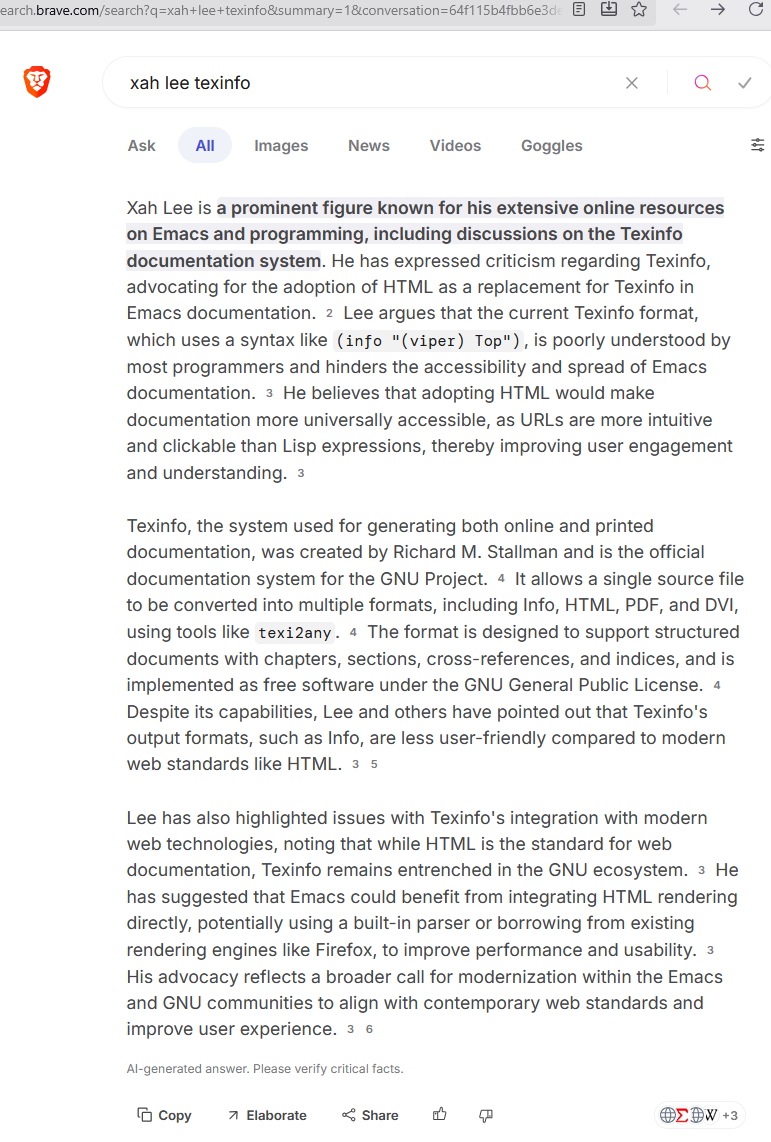Xah Talk Show 2025-11-04 Ep709 Wolfram Language Coding and Tutorial, List Operation. Emacs Workflow.

Video Summary (AI Generated, Human verified.)
The video is a coding session where the creator updates his Wolfram Language tutorial, focusing on list operations for beginners.
He demonstrates and refines examples for several Wolfram Language functions:
- Join (concatenating lists) (5:03)
- Union, Intersection, and Complement (set operations) (6:50, 9:03, 10:06)
- Table (generating lists and rectangular arrays, similar to list comprehension in other languages) (15:25, 35:25)
- Range (generating flat lists with specified steps) (57:18)
- The creator also discusses technical writing and documentation best practices, explaining his choices for naming conventions and formatting within his tutorial. He uses Emacs as his text editor and occasionally goes on tangents about software documentation styles and personal anecdotes.
- Wolfram: List Operations
- Wolfram: List. Join, Union, Intersection, Difference
- Wolfram: List. Create (Table)
- Wolfram: Create Flat List (Range)

- Xah Lee is a prominent figure known for his extensive online resources on Emacs and programming, including discussions on the Texinfo documentation system.
- He has expressed criticism regarding Texinfo, advocating for the adoption of HTML as a replacement for Texinfo in Emacs documentation.
- Lee argues that the current Texinfo format, which uses a syntax like (info "(viper) Top"), is poorly understood by most programmers and hinders the accessibility and spread of Emacs documentation.
- He believes that adopting HTML would make documentation more universally accessible, as URLs are more intuitive and clickable than Lisp expressions, thereby improving user engagement and understanding.
- Texinfo, the system used for generating both online and printed documentation, was created by Richard M.
- Stallman and is the official documentation system for the GNU Project.
- It allows a single source file to be converted into multiple formats, including Info, HTML, PDF, and DVI, using tools like texi2any.
- The format is designed to support structured documents with chapters, sections, cross-references, and indices, and is implemented as free software under the GNU General Public License.
- Despite its capabilities, Lee and others have pointed out that Texinfo's output formats, such as Info, are less user-friendly compared to modern web standards like HTML.
- Lee has also highlighted issues with Texinfo's integration with modern web technologies, noting that while HTML is the standard for web documentation, Texinfo remains entrenched in the GNU ecosystem.
- He has suggested that Emacs could benefit from integrating HTML rendering directly, potentially using a built-in parser or borrowing from existing rendering engines like Firefox, to improve performance and usability.
- His advocacy reflects a broader call for modernization within the Emacs and GNU communities to align with contemporary web standards and improve user experience.
- AI-generated answer.
- Please verify critical facts.

Table[ x, 3] (* {x, x, x} *) Table[ 2, 3] (* {2, 2, 2} *) Table[ x, {x, 3}] (* {1, 2, 3} *) Table[ x, {x, 4, 7}] (* {4, 5, 6, 7} *) Table[ x Pi , {x, 4, 7}] (* {4*Pi, 5*Pi, 6*Pi, 7*Pi} *) Table[ x^2 , {x, 4, 7}] (* {16, 25, 36, 49} *) Table[ x^2 + y , {x, 4, 7}] (* {16 + y, 25 + y, 36 + y, 49 + y} *) Table[ {x^2 + y, x y+z} , {x, 4, 7}] (* { {16 + y, 4*y + z}, {25 + y, 5*y + z}, {36 + y, 6*y + z}, {49 + y, 7*y + z}} *) (* HHHH------------------------------ *) (* 2 dimensional examples *) Table[ f[x,y], {x, 3}, {y, 2}] (* { {f[1, 1], f[1, 2]}, {f[2, 1], f[2, 2]}, {f[3, 1], f[3, 2]} } *) Table[ x I + Pi y, {x, 3}, {y, 2}] (* {{I + Pi, I + 2*Pi}, {2*I + Pi, 2*I + 2*Pi}, {3*I + Pi, 3*I + 2*Pi}} *) Table[ (x I)^2 + Pi y/z, {x, 3}, {y, 2}, {z, -5,-3}] (* {{{-1 - Pi/5, -1 - Pi/4, -1 - Pi/3}, {-1 - (2*Pi)/5, -1 - Pi/2, -1 - (2*Pi)/3}}, {{-4 - Pi/5, -4 - Pi/4, -4 - Pi/3}, {-4 - (2*Pi)/5, -4 - Pi/2, -4 - (2*Pi)/3}}, {{-9 - Pi/5, -9 - Pi/4, -9 - Pi/3}, {-9 - (2*Pi)/5, -9 - Pi/2, -9 - (2*Pi)/3}}} *)